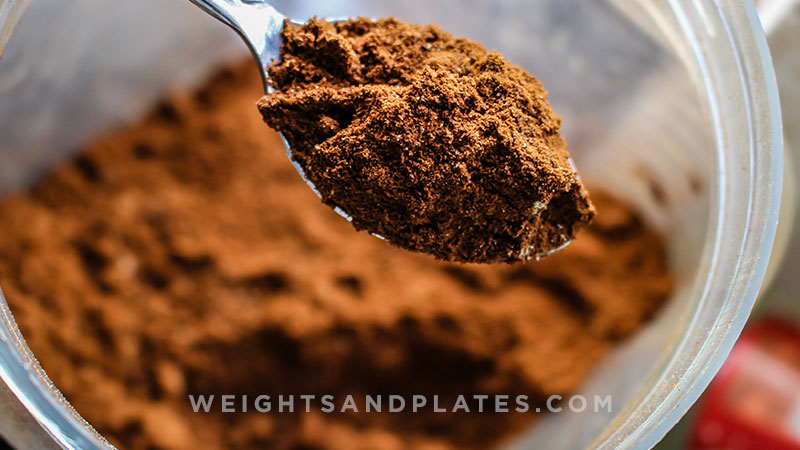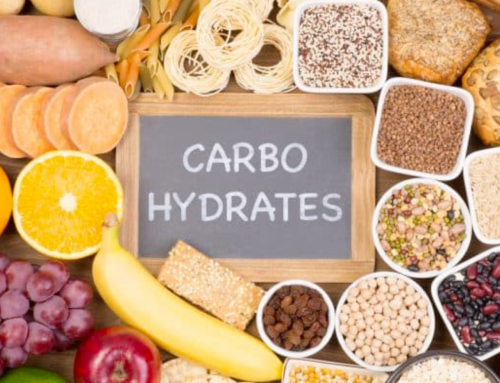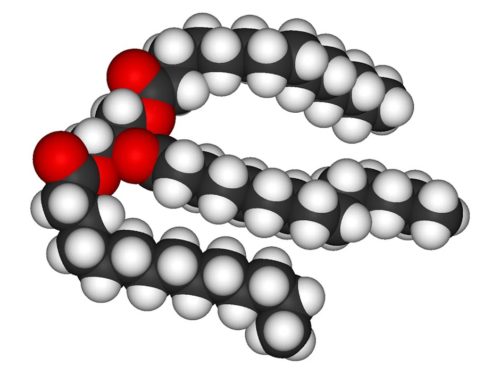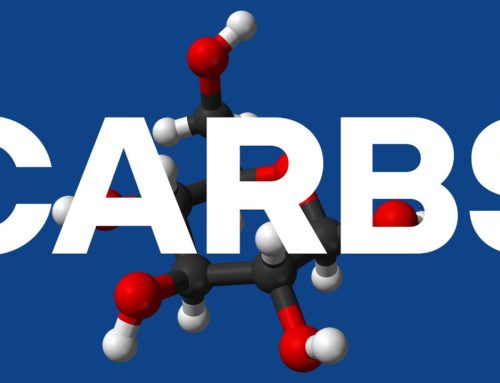by Robert Santana, MS, RD, SSC, CSCS
Most, if not all, strength trainees have been told at some point in their lifting careers that they need to consume protein to get stronger and build muscle mass. In any discussion of nutritional needs for strength training, protein is almost certain to be the first topic. However, much of the information has been misunderstood, and this paper is intended to serve as a resource for understanding the function of protein with regards to training and overall health.

Introduction to Protein & Amino Acids
A macronutrient (“macros” in modern gym lingo) is defined as “a chemical element or substance that is essential in relatively large amounts to the growth and health of a living organism.” The three major macronutrients are protein, carbohydrate, and lipids. This paper will discuss protein, while the other two will be covered in subsequent articles in this series.
The term “protein” originates from the Greek word proteos, which means “first order.” Protein is a macronutrient with a variety of roles in human physiology. Proteins are comprised of amino acids, which are the building blocks of proteins. Amino acids consist of an amine group (NH2), a carboxyl group (COOH), and a R group. The R group refers to the side chain that differentiates various amino acids’ functional groups from one another. The amino acids and their functional groups are listed in Table 1.
|
Aliphatic/non polar side chains |
Glycine
Alanine Leucine** Isoleucine** Valine** |
|
Hydroxylic Side Chain/(OH) Groups |
Serine Threonine |
| Sulfur Containing Amino Acids |
Cysteine Methionine |
| Acidic Side Chain Containing Amino Acids & their Amides |
Aspartate Aspargine Glutamate |
| Basic Side Chain Containing Amino Acids | Arginine
Lysine Histidine |
| Aromatic Ring Side Chain Containing Amino Acids | Phenylalanine
Tyrosine Tryptophan |
| Imino Acids | Proline |
|
Post-translationally formed amino acids |
Cystine
Hydroxylysine 3-methylhistidine Hydroxyproline |
Table 1. ** Denotes Branch-Chained Amino Acids
Amino acids join together to form chains via peptide bonds. Similar to qualifying totals at a meet, a chain of amino acids must have a minimum length to be considered a protein. Dipeptides consist of two amino acids, tripeptides consist of three, and a polypeptide consists of 10 or more amino acids. When an amino acid chain exceeds 50 amino acids, the compound is considered a protein.
There are about 20 amino acids that are incorporated into proteins in the body; these are categorized as essential or nonessential. Essential amino acids must be consumed exogenously (from your diet) and non-essential amino acids can be synthesized endogenously (in the human body). However, this terminology lacks flexibility since some dispensable amino acids can become indispensable amino acids if precursors are not available or if there are changes in physiological circumstances.
For example, liver disease can impair methionine and phenylalanine metabolism, which causes tyrosine and cysteine to become essential under these circumstances since these two are synthesized via methionine and phenylalanine metabolism. Thus, the term conditionally essential was adopted to account for these situations. Nonetheless, this is a useful way to determine which amino acids must be consumed from the diet in order to optimize amino acid balance in the human body.
Three of the essential amino acids are categorized as branch-chain amino acids (BCAAs): leucine, isoleucine, and valine. The “branch-chain” designation refers to the structure of their R side chain. Of the branch-chain amino acids, leucine has regulatory role in protein synthesis. More on this later.
|
Indispensable/ |
Dispensable/ Non-Essential Amino Acids |
Conditionally Dispensable/ Essential |
|
Histidine Isoleucine Leucine Lysine Methionine Phenylalanine Threonine Tryptophan Valine |
Alanine
Aspartate Asparagine Glutamate Serine
|
Arginine Cysteine Glutamine Glycine Proline Tyrosine
|
Amino acids in the human body form an “amino acid pool.” The amino acid pool consists of amino acids consumed from the diet as well as amino acids that result from protein breakdown. The human body is constantly breaking down and rebuilding proteins and most of the amino acids used to synthesize proteins are those same amino acids resulting from protein breakdown. This information will be useful in understanding the measurement of protein synthesis and the development of protein guidelines.
Proteins and Genes
An in-depth discussion of genetics and biochemistry is beyond the scope of this paper. However, a basic understanding is necessary when deciphering “gym speak” pertaining to protein. Proteins have various roles in the human body beyond growing muscle. In fact, skeletal muscle comprises only 40% of the protein in the human body, with the remaining 60% divided among enzymes, structural proteins, immunoglobulins, and other proteins which will be briefly discussed below.
Proteins are coded for by genes, which are made up of deoxyribonucleic acid (DNA). DNA is a nucleic acid located in the cell nucleus, where it permanently resides. Genes can either be “turned on” or “turned off” depending on the situation. For example, environmental stimuli (e.g. lifting progressively heavier weights, the production of casein in a woman who recently gave birth) lead to the expression of genes (e.g. genes that can lead to an increase in the number of sarcomeres or the production of casein respectively) which can lead to adaptations to that stimulus. In order for this to occur, the DNA molecule must copy its code, a process known as transcription. It does this by creating another nucleic acid known as messenger ribonucleic acid (mRNA), which transports the code out of the nucleus to another cellular organelle known as the ribosome.
The ribosome is where protein synthesis occurs in the human body. An important point of this paper is that there many types of proteins synthesized in the human body that are not muscle proteins. We will revisit this point later, so make sure to note it.
Once mRNA transports the code to the ribosome, another type of RNA called transfer RNA (tRNA) transports the necessary amino acids to the ribosomes in accordance with the code. This process is called translation. Think of the DNA like a physician dictating a patient’s history and physical along with the orders to be carried out, the transcriptionist typing it out (transcription), and the nurses and medical staff carrying them out (translation).
Protein structure consists of a primary, secondary, tertiary, and in some instances quaternary structure, referring to the actual geometry of the molecule. During protein synthesis, proteins undergo “folding” in order to maximize stability and develop into their final structure. The finished protein is packaged into a vesicle and transported to a cellular organelle called the Golgi apparatus where its final destination is determined. From here, it may undergo another step (depending on the protein) called post-translational modification. Some examples of post-translational modifications include the addition of a carbohydrate molecule to hemoglobin via glycosylation, or in the case of insulin the removal of a propeptide (i.e. inactive protein) and the addition of a disulfide(two sulfur molecules) bridge by the amino acid cysteine to connect two polypeptides. This is a condensed and simplified explanation of how proteins are synthesized in the human body.
Types of Proteins
Now that we know what proteins are and where they come from, let’s learn about what they do for us. Proteins are very abundant in the human body. To put it into context, the human body has 20,000 different genes but millions of different proteins. This is because a single gene can code for many proteins. So, while many people may hear the word “protein” and think of skeletal muscle, muscle proteins constitute a minority of both the types and quantity of proteins found in the human body.
Enzymes are proteins that are responsible for regulating the rate of metabolic reactions. These enzymatic reactions will be referenced in future discussion of both the remaining macronutrients and the micronutrients. As a sneak preview to the next installment, let’s use carbohydrate metabolism as an example. The first step in metabolizing glucose is the conversion of glucose to Glucose-6-phosphate and the enzyme that controls the rate of this reaction is hexokinase (in the muscle). If concentrations of glucose-6-phosphate are high, hexokinase activity will be inhibited and slow down production of glucose-6-phosphate.
As another example, when creatine phosphate converts to creatine, the enzyme that regulates the rate of this reaction is creatine kinase and its activity is dictated by adenosine triphosphate (ATP) availability. Proteins also play a role in DNA transcription as well as DNA replication. RNA polymerase and DNA polymerase are the enzymes that initiate transcription and replication respectively. When a gene is expressed, RNA polymerase causes the formation of mRNA for transcription and DNA polymerase allows the DNA molecule to replicate itself for cell division.
Gene expression can also indirectly lead to an increase in substances that are not proteins, such as testosterone. For example, a gene can be expressed that codes for the protein CYP11A1, which is the enzyme required to convert cholesterol into steroid hormones. Although testosterone is not a protein, a gene can code for a protein that can lead to an increase in testosterone production. There are millions of enzymatic reactions that take place in the human body – the takeaway here is that enzymes are an important type of protein required for normal human physiological function, and they take on a regulatory role in ensuring that metabolic reactions are taking place at an appropriate rate.
There are also structural proteins that provide cellular integrity. For example, the ribosome itself is comprised of 40% protein, with the remaining 60% coming from another RNA molecule known as ribosomal RNA (rRNA). Proteins in the nucleus are known as histones and are responsible for maintaining the DNA structure so that it remains neatly coiled. Scaffolding proteins in the arteries, such as collagen and elastin, provide structural integrity that allow the arteries to stretch and recoil in response to blood flow from the heart without rupturing. Keratin is a protein that protects our skin from damage and provides structural integrity for the hair and nails as well.
Additional proteins include channel proteins, receptors, and transport proteins. Channel proteins (e.g. sodium, potassium, and calcium channels) allow these ions to enter and exit the cells during muscular contractions. Receptors are signaling proteins that bind molecules such as hormones to the outside of the cell to transmit signals to the inside of the cell. Peptide hormones such as insulin can further be classified as protein hormones due to having >50 peptide bonds (Insulin has 51). Immunoglobulins, such as those measured in allergy tests, are also proteins. Proteins also act as buffers and fluid balancers. There are also acute phase responders (e.g. heat shock proteins) that are formed in response to stress such as during acute illness.
Lastly, and more relevant to our discussion, myofibrillar proteins (or motor proteins in some textbooks), actin, myosin, and others, are located in our sarcomeres (the basic unit of skeletal muscle) and are responsible for muscle contractions. The list goes on, and more will be discovered. We’ll leave the details for a physiology textbook, but, again, the point here is that there are millions of proteins in the human body.
Muscle Protein Synthesis and Protein Supplements
“Muscle Protein Synthesis” has become a popular term in the fitness industry. Some of the readers may have heard the term thrown around on various boards, articles, and YouTube videos. “MPS” is so popular that people are more concerned with increasing their muscle protein synthesis than setting deadlift PRs. It is one of the most common topics that people ask about. This is primarily due to the supplement industry’s claims that protein supplementation is going to lead to bigger muscles.

The claim originates from studies on the effects of protein supplementation combined with single bouts of exercise on muscle protein synthesis. Protein synthesis is initiated by a protein kinase signaling complex known as mammalian target of rapamycin (mTOR). mTOR is stimulated by various factors such as mechanical stress, insulin, and leucine. A detailed description of these mechanisms is beyond the scope of this paper. mTOR is mentioned only to provide the reader with familiarity with the term and how leucine (which is a BCAA) plays into all of this.
How do we measure muscle protein synthesis? The most popular method is the use of isotope tracer techniques. Think of this as placing a tracking device in the human body. Since the amino acid pool contains both amino acids resulting from protein breakdown and amino acids from dietary protein, it is difficult to determine the rate of protein synthesis since we can’t effectively “follow” the amino acids to their final destination. So professional researchers have developed techniques to do this.
They infuse a tracer isotope (e.g. carbon-13) bound to an amino acid, often leucine or phenylalanine, and this process is known as labeling. These amino acids are now “labeled” with traceable isotopes, which serve as a “tracking device” in the human body. A peripheral venous catheter is placed in a vein on the arm, with another catheter placed on the contralateral vein for blood sampling. Frequent blood samples are collected at predetermined intervals to assess plasma amino acid status and muscle biopsy samples are collected at predetermined intervals, often longer intervals than the blood samples, for the assessment of intramuscular amino acid content. This allows for the determination of the quantity of the tracer that entered the amino acid pool and the quantity of the tracer that was incorporated into the muscle protein. After the samples are analyzed, the fractional synthetic rate (FSR) – the rate at which the precursor amino acid is incorporated into the target protein, in this case skeletal muscle protein – can be determined. Professional researchers have conducted numerous studies on the transient effects of various types of dietary proteins as well as various feeding schedules combined with single bouts of exercise. The general consensus is that whey protein is considered a fast protein, and casein or egg protein is a slow protein, with fast and slow designations related to the rate of digestion and the FSR. It has been repeatedly demonstrated that after a single bout of exercise, both synthesis and breakdown simultaneously increase, with a greater rise in synthesis. This effect is exaggerated with post-exercise protein consumption (~30-60 minutes), with a faster and more acute rise with whey protein consumption and a slower and more prolonged rise after casein protein consumption.
This has led to the conclusion and subsequent marketing claim that lifters must take protein post-exercise to build muscle. During periods of fasting, such as an overnight fast, protein degradation predominates over synthesis and thus this has led to recommendations that slow proteins, such as casein, be consumed before bed time. However, there are some criticisms of these conclusions that must be considered.
The measurement of post-exercise muscle protein synthesis is useful in providing insight as to what a single, and often novel (new and unadapted-to), exercise stress can do at the cellular level. One would expect that this would lead to chronic changes in muscle mass. However, this has not been effectively demonstrated. In fact, recent data indicate that the transient changes in muscle protein synthesis are not correlated with training-induced chronic changes in muscle volume (measured via Magnetic Resonance Imaging (MRI)) or lean mass (measured via Dual X-ray Absorptiometry (DXA)). Chronic positive changes in muscle volume are likely due to a chronic adaptive response (e.g. the novice effect) to training.
Whether novice, intermediate, or advanced, if you introduce a novel stress (e.g. 10 x 10 knee extensions to someone who has not been doing this), it will have a more profound effect than a stress that has been adapted to. So, it is probable that these pronounced changes in muscle protein synthesis measurements may taper off after a few training sessions. Additional factors (in order of importance) that can influence chronic changes in muscle mass include programming, total daily protein and other macronutrient intake, as well as well as sleep, stress, and other factors contributing to recovery.
Programming is emphasized because it is what drives muscular adaptations, and the diet is a mere supplement to the programming. For instance, a novice can build muscle on a poor diet provided there is some sort of progression. However, a novice cannot eat protein and expect gains in muscular bodyweight unless he is severely malnourished or clinically ill at baseline. So, the takeaway message is to focus on the following priorities in this order:
- Programming
- Total Protein Intake
- Total Carbohydrate Intake
- Total Calorie Intake
- Supplementation
Drinking a 20-30 g protein shake post-exercise while your eternal 225 deadlift that never increases is not a productive use of training time or hard-earned money. Weight on the bar is priority Number 1, followed by nutritional factors as well as other non-nutritional factors related to recovery. In summary, you cannot out-eat a poor training program.
Protein Quality and Protein Requirements
There are several designations for assigning protein quality. Designating proteins as “complete” or “incomplete” is familiar to most. A complete protein contains all of the indispensable amino acids in amounts necessary for human physiological function. In contrast, incomplete proteins lack sufficient quantities of certain amino acids. Complete proteins typically come from animal products, with the exception of soy, quinoa, and chia seeds which are of plant origin. Incomplete proteins are typically found in plant products such as grains, vegetables, legumes, seeds, etc.
Not all incomplete proteins have the same amino acid profiles, and thus have different limiting amino acids. The table below provides a list of incomplete protein food sources and their respective limiting amino acids. For vegetarians or those who aren’t eating animal proteins, mutual supplementation is an option that consists of combining incomplete protein sources that complement each other in terms of their limiting amino acids. For example, legumes have a high content of lysine but are low in methionine. In contrast, rice is low in lysine, threonine, and tryptophan, so combining rice with beans ensures that all of the essential amino acids are provided in sufficient quantities. These should be consumed together, although some argue that simultaneous consumption is not as important. Ultimately, when consuming a diet dependent on plant protein, a variety of protein sources must be consumed to offset the low-content limiting amino acid in each source.
| Food Source of Incomplete Proteins | Possible Limiting Amino Acid(s) |
| Wheat, rice, corn, other grains | Lysine, Threonine, and Tryptophan |
| Vegetables | Methionine |
| Legumes, peas, lentils | Methionine, Cysteine |
| Nuts & Seeds | Lysine and Threonine |
There are various other methods of evaluating protein quality that are worth briefly discussing since they were used in the development of nationwide guidelines on protein consumption. The Protein Digestibility Corrected Amino Acid Score (PDCAAS) evaluates protein quality by comparing the content of a limiting amino acid of the protein of interest (known as the “test protein”) to the amount of that same amino acid in the reference protein, which is usually egg or milk protein. The value is multiplied by the percent of the protein that is digested (i.e. its digestibility) to compute a score, which is expressed as a percentage. The closer this value is to 100%, the higher the protein quality.
The PDCAAS must be used in the development of food labels for foods intended for individuals over 1 year of age or with stated health claims. The limitation to this method is in the determination of protein digestibility through measurement of fecal nitrogen. The problem with this method is that fecal nitrogen includes nitrogen from protein in the human body other than the test protein itself. Some proteins also ferment (i.e. degrade) in the colon. Proteins are mostly digested in the upper GI tract, and colonic fermentation can lead to an overestimation of digestibility.
| Food | PDCAAS | DIAAS |
| Cow’s Milk | 100% | 114% |
| Eggs | 100% | 113% |
| Whey Protein Isolate | 100 | 109% |
| Casein | 100% | 118% |
| Soy Protein | 100% | 91.50% |
| Beef | 92% | 111% |
| Pea Protein isolate | 89% | 91.50% |
| Chickpeas | 78% | 83% |
| Edemame | 78% | 83% |
| Black Beans | 75% | N/A |
| Tubercles | 74% | N/A |
| Vegetables | 73% | N/A |
| Other Peas and Legumes | 70% | N/A |
| Fresh Fruits | 64% | N/A |
| Cereals | 59% | 10% (Corn Based) |
| Cooked Peas | 59% | 58% |
| Peanuts | 52% | 49% (almonds) |
| Rice | 50% | 59% |
| Dried Fruit | 48% | N/A |
| Wheat Bran | 53% | N/A |
| Wheat | 42% | 40.20% |
| Gluten | 25% | N/A |
To address this issue a newer method known as the Digestible Indispensable Amino Acid Score (DIAAS) has been developed. This method is similar to the PDCAAS except it measures the ratio of 1 g of indispensable amino acid in the test protein to the same indispensable amino acid in 1 g of a reference protein. The DIAAS addresses the digestibility issue by assessing amino acid digestibility in the upper GI tract vs. the colon (the details of which are interesting). Since the values are not truncated, the DIAAS allows for ranking protein sources in terms of their indispensable amino acid content and thus ability to meet indispensable amino acid requirements. This is in contrast to the PDCAAS, which may yield similar values for various proteins with different amino acid profiles.
Although the DIAAS addresses some of the limitations with the PDCAAS, the rankings of actual food choices are nearly identical. In fact, this appears to be the case with all measurements of protein quality with animal proteins ranked high and plant proteins ranked lower.
The last measurement of protein quality worth mentioning is biological value (BV), because of its role in the determination of current Recommended Daily Allowance (RDA). This method is based on the measurement of nitrogen balance: individuals are placed on a “nitrogen-free” diet for a period of ~1 week and then placed on a diet containing the test protein in an equal amount to their protein requirement for the same period. Nitrogen consumed is determined from the protein quantity ingested and nitrogen losses are derived from fecal and urinary excreted nitrogen. The ratio of nitrogen retained to nitrogen absorbed is computed and expressed as a percentage, with higher values indicating higher quality protein.
The issue with this method is that it fails to account for nitrogen lost via other routes such as skin and nails. Additionally, if a protein is consumed at levels below nitrogen equilibrium it will exhibit a higher BV and if protein is consumed at or in excess of nitrogen equilibrium, retention decreases and may appear to indicate a low BV. Lastly, and most importantly, nitrogen balance studies do not provide information about amino acid balance. Thus, an individual could be in nitrogen equilibrium but be deficient in certain amino acids. (It should be observed here that nutrition studies, as a general rule, have their limitations.)
Next, we have several formal guidelines for protein intake requirements for adults. Dietary Reference Intakes (DRIs) are reference values that estimate nutrient intakes for planning and assessing the diets of healthy individuals. The DRIs start with the Estimated Average Requirement (EAR), which is the intake level for a nutrient that meets the needs of 50% of the population. This means that the other 50% of the population will not have their needs met. These are based on a review of the relevant professional research literature on the subject. The remaining reference intakes will be examined in the upcoming articles in this series, so it’s best to introduce and define them here.
- Recommended Dietary Allowance (RDA): The RDA is dependent on the EAR. If there is no EAR, there will be no RDA. The RDA is set at the EAR plus twice the standard deviation (SD) if known. The average daily dietary intake level that is sufficient to meet the nutrient requirements of nearly all (97 to 98 percent) healthy individuals in a group.
- Adequate Intake (AI): A value based on observed or experimentally determined approximations of a given nutrient intake by healthy people. This is used when there is no RDA available.
- Tolerable Upper Intake Level (UL): The highest level of daily nutrient intake that is likely to pose no risk of adverse health effects to almost all individuals in the general population. As intake increases above the UL, the risk of adverse effects increases. It is important to note that not all nutrients have a UL.
The EAR for protein is 0.66 g/kg of bodyweight and this amount represents the lowest dietary protein intake necessary to achieve a neutral nitrogen balance or nitrogen equilibrium – nitrogen in = nitrogen out. The RDA for protein is set at 0.8 g/kg of bodyweight per day for adult males >18 of age and adult females >14 years of age. There are some problems with these guidelines. First, both professional researchers and practitioners agree that the RDA for protein may not be appropriate for older adults, resistance trained individuals, or vegetarians. Therefore, protein needs in excess of the RDA may be beneficial in promoting training-induced gains in lean body mass, reducing muscle mass loss during periods of intentional bodyweight loss, and preserving and/or promoting increases in lean body mass in older adults. Furthermore, those on a plant-based diet will most certainly require a higher total protein intake than the RDA would suggest, due to the lower quality of the incomplete vegetable protein.
There is no UL for protein, and the Institute of Medicine allows for a range of 10-35% of total calories from protein (provided energy needs are met – this means that you may need more if you are in a negative energy balance). This lines up with anecdotal evidence from experienced strength trainees and coaches. Furthermore, diets higher in protein have been shown to promote greater satiety and improved glycemic control, both of which are advantageous for weight management and overall health.
Thus,150-250 g of protein per day is likely sufficient for healthy males of all ages and 100-150 g protein per day is likely sufficient for healthy females of all ages. Smaller individuals may need less, and larger individuals may need more. Individuals who are in negative energy balance pursuing weight loss should stay on the higher end of the spectrum, and individuals gaining weight can hang out somewhere in the middle. Since this amount is far in excess of the RDA, chances are that older adults and vegetarians will receive sufficient amino acids on the higher end of these ranges with no special recommendations needed.
It is recommended that most of the protein be consumed from actual food and not 15 protein shakes per day. The reason for this is to ensure that adequate micronutrients are consumed, and to promote satiety throughout the day. Since whey protein is quickly digested, it is often not filling. It is also recommended that protein be consumed in 20-50 g meals multiple times per day versus consuming larger amounts fewer times per day.
This does not mean that you won’t absorb or digest protein taken in larger amounts. There is evidence from professional research suggesting a limit as to how much protein can be assimilated into muscle protein in a given time. Since 60% of our body’s proteins are non-muscle proteins, the remaining protein will be digested, absorbed into the amino acid pool, and utilized for the synthesis of those proteins.
Once again, the training stimulus is priority Number 1, above all else. We encourage you to spread your protein out throughout the day to enhance insulin sensitivity, promote satiety, and maximize your chances for muscle growth. This should be done on most days, but if you end up eating the 72 oz. steak in Amarillo to mark it off your bucket list, we won’t hold it against you.
A version of this article appeared in Starting Strength 03/27/2019




